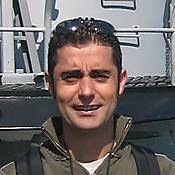
Ahoy mates and welcome to MSW’s Scuttlebutt! Let’s see what going on today.

Starting off today, I want to announce that our youngest crewmate, Ian “Lil’ Gator” Loup is 4 today. I know, shameless plug. Oh well. If any one else has an upcoming birthday or announcement, send me a pm and I’ll get into the Scuttlebutt.

Airfix to release large scale u-boat
Airfix will release a 1/72 Type XXIII uboat this month. Retail cost will be about $54.60 USD. As soon as photos are available, we will post them.
Gunze Sangyo will release naval figures
Gunze Sangyo is the latest to get into the naval figure business with their 1/350 and 1/700 offerings. Both sets will retail for around $8.05 USD
More small scale wonders from Hobby Boss
Hobby Boss announces the release of more of their well received small scale naval vessels.
1/700 USS Gato SS212 1944
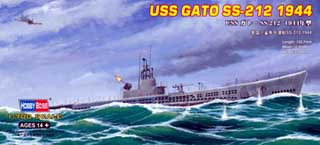
1/700 Russian Navy Oscar II
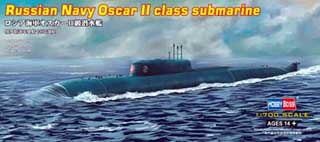
1/1250 USS Arthur W. Radford
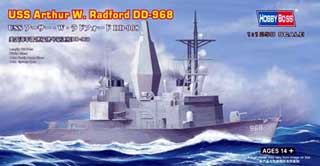
1/1250 USS Spruance
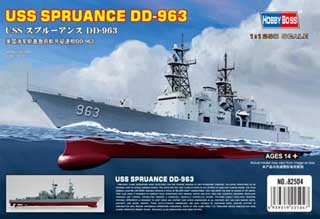

South West Royal Navy Ships Seize 23 Tonnes Of Drugs In Gulf
Plymouth-based Royal Navy warships operating in the Gulf region have seized 23 tonnes of narcotics which could have helped to fund the insurgency fighting British forces in Afghanistan.
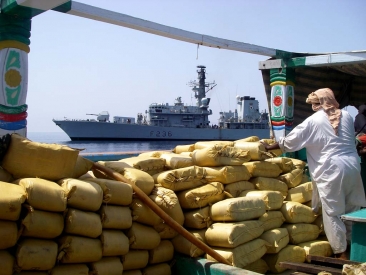
Seizures by coalition naval forces over the past five months can now be revealed – and total 30 tonnes, over 70 per cent of which (23 tonnes) was down to Royal Navy interceptions.
The British warships involved were Devonport-based frigates HMS Chatham and HMS Montrose, and the Portsmouth-based destroyer HMS Edinburgh. They were supported by the Royal Fleet Auxiliary helicopter support ship Argus and her embarked Sea King aircraft.
Sailors and Royal Marines from the ships discovered hidden drugs in vessels along the so-called ‘Hash Highway’, and often operated in the most unpleasant conditions. The narcotics they seized included hashish, opiates, cocaine and amphetamines.
Speaking from the Combined Maritime Forces headquarters in Bahrain, the Commander of Royal Navy forces in the region, Commodore Keith Winstanley, said: “The scourge of illegal drugs are one of the gravest threats to the long term security of Afghanistan, and a vital source of funding for the Taliban warlords who seek violence against Afghan, British and NATO forces. Our mission in Afghanistan is
one of absolute importance and by seizing these drugs we have dealt a significant blow to the illegal trade. News of these successes has been kept quiet for operational reasons, but I am delighted that the tremendous efforts can now be recognised.”
Cdre Winstanley stressed the Coalition aspect of the counter-drugs operations, pointing out that tactical command at sea had been under the auspices of Pakistani, French and Canadian Task Force Commanders.
The Commanding Officer of HMS Chatham, Commander Martin Connell said: "This is a really positive result for HMS Chatham, but is in fact routine business for us. We managed to locate the vessel and then conduct a very unpleasant boarding in demanding conditions. My sailors and marines did an outstanding job in managing to locate six tons of illegal narcotics plus other significant intelligence."
By some estimates hashish accounts for half the profits from the drug trade in the region. The United Nations World Drug Report estimates that drug addiction rates have almost tripled in the Arab world.
The Commanding Officer of HMS Chatham, Commander Martin Connell said, "This is a really positive result for HMS Chatham, but is in fact routine business for us. We managed to locate the vessel and then conduct a very unpleasant boarding in demanding conditions. My sailors and marines did an outstanding job in managing to locate 6 tons of illegal narcotics plus other significant intelligence."
HMS Chatham Warfare Officer Lieutenant Joanne Cave, who led the initial phase of the boarding, said:
"Boarding operations are always quite physical and arduous tasks but this particular boarding displayed the determination and professionalism of my team in an excellent light. We all worked hard to achieve the aim of securing, searching and collecting evidence from a vessel crawling with cockroaches and rats in the extreme heat of the Gulf.
“ The success of the deployed Boarding Teams and the concurrent activity from HMS Chatham herself just goes to prove how versatile and capable the Ship's boarding assets are. The support of the boats crews and flight were also vital to the smooth
running of the operation. To say that we have made a small effort towards stopping the trafficking of illegal drugs is a rewarding experience and one that I would gladly participate in again."
One of the boarding officers involved, Lieutenant Tom Philips said, "We realised something wasn't right when the crew said they had been fishing for 5 days but there were only a handful of fish in the freezer. The helicopter crew had also told us that the dhow's crew had been ditching bails out the back as we approached. However, around 35 of us were involved in the operation, supported by the main ship's
company of 250 in HMS Chatham. We were working in pretty horrible conditions. When you are crawling through tight compartments in 50 degree heat and surrounded by rats and cockroaches, you have to remain pretty focussed. However, we had a job to do and everyone carried out their duties with the utmost professionalism; ultimately, the result was more than worth it!"
Living among dead submarines
Ten years ago Russia started to dismantle nuclear-powered submarines withdrawn from combat duty. This hard and dangerous work is still going on, but the end is in sight.

For Russia, maintaining a huge navy turned out to be wasteful and pointless, and so the decision was taken to reduce the number of combat units in the Far Eastern and north-western parts of Russia.
Today some 200 Russian nuclear submarines and three nuclear-powered surface ships already pose no threat to any opponent.
Yevgeny Kudryavtsev, director of the fuel cycle, waste and decommissioning department at Rosatom (Russian Nuclear Power Agency), says the task of dismantling the surface ships and submarines withdrawn from service is almost accomplished. By 2010 almost all the decommissioned vessels will be dismantled.
"Dismantlement" here does not imply complete dismantlement. The submarines have not disappeared. Like dead fish, most parts of the once formidable vessels remain ashore or at anchor. Experts say the total activity of the nuclear waste still aboard the vessels and at naval bases exceeds 25 million Ci. The total weight of contaminated structures subject to dismantlement exceeds 150,000 tons.
The reason is that the Russian nuclear industry was simply unprepared to "digest" nuclear waste in such large quantities. An average of 14-16 submarines were withdrawn from service every year, with only three or four of them being dismantled. This soon resulted in the volume of nuclear fuel, unloaded from the submarines and piled up at four coastal engineering facilities, expanding beyond the storage capacity. The infrastructure did not meet security standards, and the risk of accident remained high, with dozens of tons of nuclear fuel and tens of thousands cubic meters of liquid and solid nuclear waste stored at the facilities. The potential radioactivity of the materials stored there exceeded the fallout from the Chernobyl disaster.
Before 1998 the Defense Ministry was responsible for dismantling naval vessels. Later nuclear engineers were involved, developing special security measures that eventually changed the situation. "Dry" temporary storage was introduced, metal-and-concrete containers were developed, storage areas expanded, and additional trains and special wagons put into operation.
Russia alone was not capable of carrying out the whole dismantlement program, and the international community willingly offered money to neutralize the armada of decommissioned Russian submarines. According to the G8 Global Partnership Against the Spread of Weapons and Materials of Mass Destruction program (Kananaskis, Canada), $20 billion were earmarked for dismantlement of nuclear-powered vessels in 2002-2012.
Russia's main partners in the dismantlement process are Great Britain, Germany, Norway, Sweden and France. The program was supported by the Northern Dimension fund, the TACIS program (EU program for technical assistance) and the IAEA. Today Russia has agreements with the U.S., Canada, Italy and Japan.
Rosatom reports that in the past six years foreign partners have financed the complete dismantlement of 26 submarines, and 14 more vessels are in the line. The bulk of the costs, however, are borne by Russia, which is financing the dismantlement of 70 vessels.
The mass of metal that was once Russia's nuclear navy totals 1.5 million tons. The special trains will have to run at least 100 journeys to transfer that daunting mass from Russia's north-west to the Mayak chemicals plant near Chelyabinsk in the Urals, which holds the monopoly on recycling nuclear waste. However, the trains are capable of running only 10-15 journeys a year. This means no rapid evacuation is possible, and the remnants of nuclear submarines will remain on Russia's shores for a long time to come.
Theoretically, dismantlement is considered complete after all the nuclear materials and equipment of a submarine are recycled. However, due to a high level of residual radiation, a submarine's reactor plant takes 50-70 years before it can safely be dismantled, unless young physicists invent something new in the meantime. Reactor compartments are therefore extracted from submarine hulls, isolated and put into storage areas. Yet there is a shortage of storage space and some of these compartments are kept afloat.
These "floating coffins" worry Russia's European neighbors most, though the situation is improving. With Germany's financial assistance, a long-term storage facility for reactor compartments from all over the north-western part of Russia is being built at the Sayda Bay on the Kola Peninsula.
Experts urge people not to yield to radiophobia, as fears of environmental disaster at the dismantlement site are almost baseless.
Experts at the All-Russian Scientific Research and Development Institute of Energy Technology in St. Petersburg say that even in a worst-case scenario the expected radiation level will not exceed the current sanitary standards.
A gas-aerosol fallout is also possible, but its effect would be insignificant and would pose no threat to the population. The density of fallout on the ground would be low, and no disposal of contaminated water is done at the storage facility. Security of the facility is guaranteed by innovative technologies and well-qualified personnel.
Photo of the Day
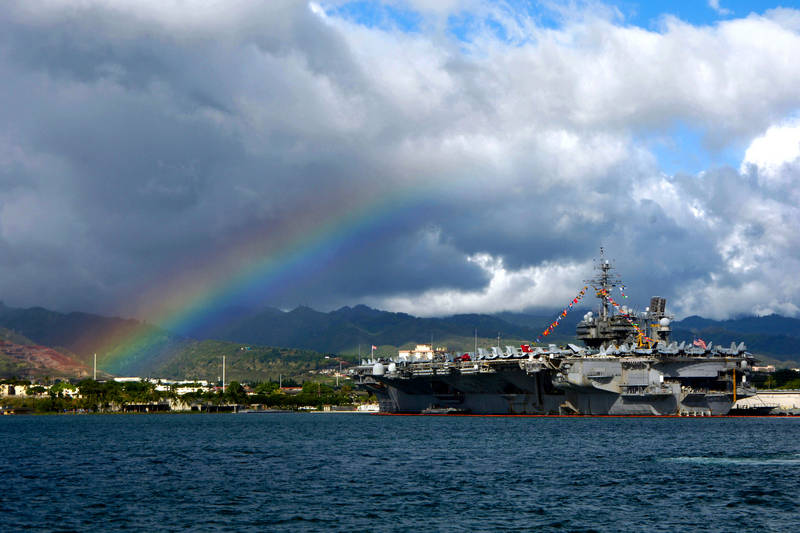
A rainbow arches near the aircraft carrier USS Kitty Hawk, which is moored at Pearl Harbor, Hawaii, July 4, 2008.
Gator








